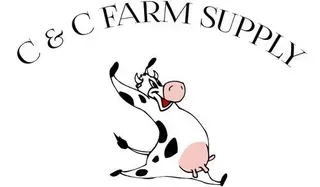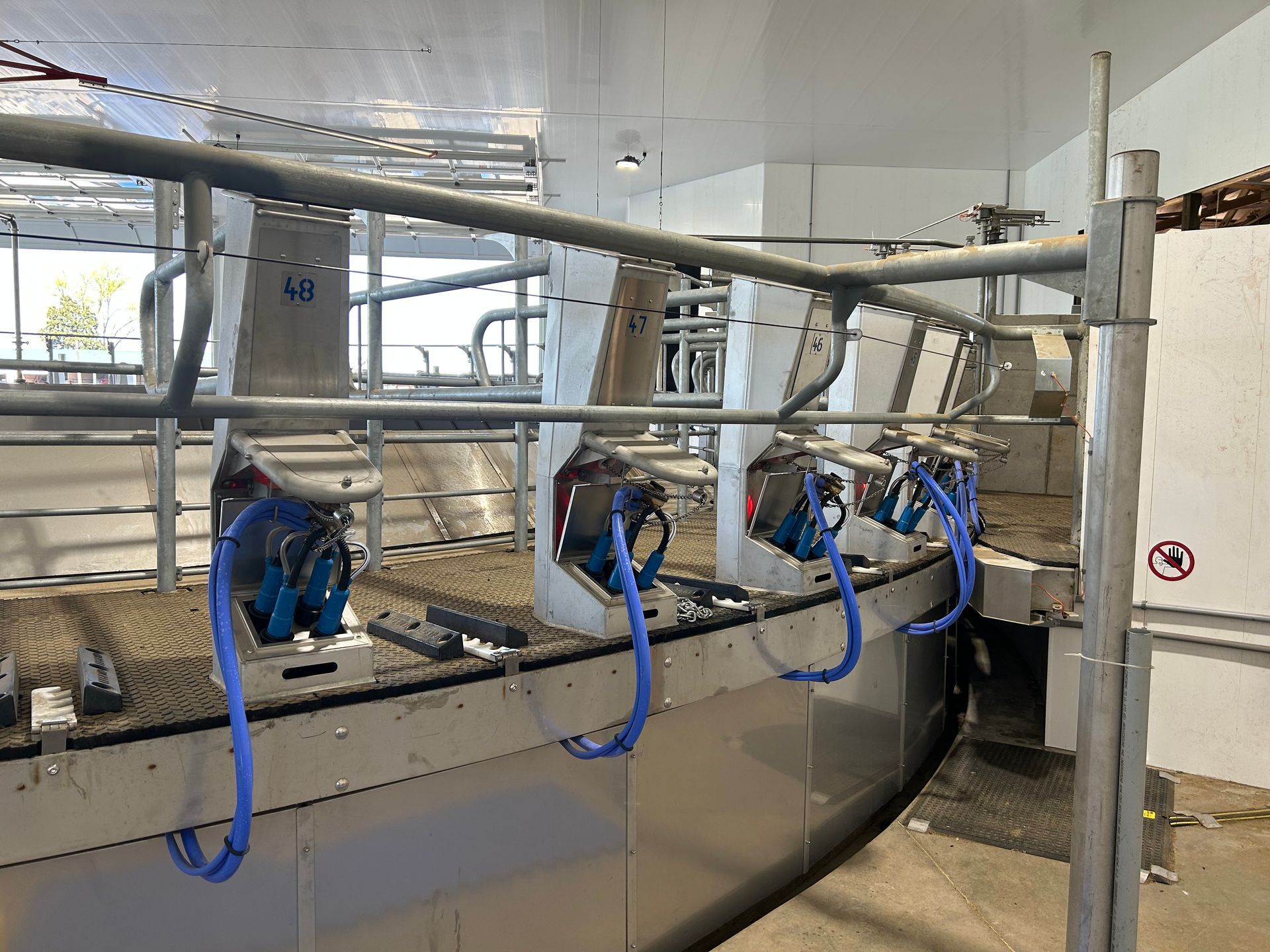Ensuring Safety in Dairy Farm Operations: Expert Insights on Best Practices, Equipment, and Solutions
Dairy farming can be a rewarding and profitable endeavor, but it’s also a demanding and high-risk industry. The safety of both your workers and animals should be a top priority to ensure smooth operations, productivity, and overall well-being. As a dairy farm supplies and solutions expert, I've seen firsthand the challenges farmers face when it comes to maintaining safety on the farm. In this guide, we will explore dairy farm safety best practices, dairy farm equipment safety, safety solutions, and how you can prevent dairy farm accidents by adhering to proper health and safety guidelines.
As a farmer or farm manager, knowing the best ways to keep your dairy farm safe can save you time, money, and, most importantly, lives. Let’s dive into the crucial aspects of maintaining safety in your operations.
1. Dairy Farm Safety Best Practices: Building a Culture of Safety
Safety on a dairy farm begins with the right mindset. It’s essential to foster a culture of safety at every level of your operation, from the farm workers to the machinery operators. Ensuring everyone understands the risks and knows how to mitigate them is key to preventing accidents and injuries.
Key Safety Best Practices for Dairy Farms:
- Training and Education: Continuous education on safety is paramount. New employees and seasoned workers alike should undergo regular safety training that covers machinery operation, animal handling, and emergency procedures.
- Personal Protective Equipment (PPE): Workers should always have access to and be encouraged to wear appropriate PPE, such as gloves, steel-toed boots, ear protection, and eye protection when necessary.
- Routine Safety Inspections: Regularly inspect your equipment, tools, and even the farm's layout. Ensure walkways are clear, lighting is adequate, and equipment is in good working condition. Many accidents happen due to a lack of maintenance or a poorly organized workspace.
- Safety Signage and Alerts: Place clear and visible safety signage on your farm. Warning signs about slippery floors, high-voltage areas, or caution when working around livestock can make a huge difference.
Personal Anecdote: A Close Call on the Farm
Years ago, we were helping a dairy farm with some of their heavy-duty milking equipment. During an initial assessment, we noticed the safety training had been inconsistent, and employees weren’t always wearing proper PPE, which led to several minor injuries over time. By implementing routine safety training and reinforcing the importance of using PPE, the farm saw a significant decrease in injuries. This small but critical shift made all the difference in maintaining a safe working environment.
2. Dairy Farm Equipment Safety: Choosing the Right Tools and Machinery
When it comes to dairy farming, specialized equipment plays a central role in maintaining efficiency and profitability. However, the improper use or lack of maintenance of this equipment can lead to dangerous situations. From milking machines and tractors to feed mixers and silage equipment, proper safety procedures are essential to prevent accidents.
Choosing Safe Equipment: What to Look For
- High-Quality, Durable Equipment: Investing in high-quality, durable dairy equipment from reputable manufacturers ensures that you’re getting machinery designed with safety in mind. Make sure the equipment complies with local safety standards and regulations.
- Regular Maintenance: Proper maintenance is essential to ensure the machinery functions as intended. Over time, wear and tear can cause parts to malfunction, leading to breakdowns or accidents. Set up a regular inspection and maintenance schedule to prevent this.
- Operator Training: Anyone operating dairy equipment should be thoroughly trained in its safe operation. This includes understanding the controls, recognizing potential hazards, and knowing what to do in case of an emergency.
- Emergency Shutoffs and Safety Features: Modern dairy farm equipment often includes built-in safety features such as emergency shutoff switches, protective guards, and fail-safes. Always ensure these features are in place and functioning properly.
Personal Anecdote: Milking Machine Safety
A while back, we worked with a farm that had older milking machines, some of which were prone to overheating. Despite knowing the risks, workers didn’t always follow the necessary shutdown procedures. After updating the equipment to newer, safer models with built-in safety mechanisms and implementing a comprehensive training program, the incidents of overheating—and the potential for injury—significantly decreased.
3. Dairy Farm Safety Solutions: Innovative Tools and Technologies
Advancements in technology have brought innovative safety solutions to dairy farms. By incorporating the right technology and systems, farmers can significantly reduce risks and ensure a safer environment for both workers and animals.
Technological Solutions to Enhance Safety:
- Automated Milking Systems: Automated milking systems not only improve efficiency but also reduce the manual labor required to milk cows. These systems are designed with safety features to minimize the risk of injury to workers. Workers can monitor the system remotely and intervene when necessary.
- Farm Management Software: Use farm management software to track equipment maintenance schedules, employee safety training, and safety inspections. This software can help you stay on top of any potential risks and proactively address them.
- Remote Monitoring and Sensors: For large-scale dairy operations, remote monitoring systems and sensors are invaluable. These systems can detect potential hazards, such as equipment malfunctions or safety breaches, and alert managers in real time.
- Safety Drones: For larger dairy farms, drones can be used to monitor farm conditions and identify hazards. They can provide aerial views of equipment, animal health, and farm infrastructure, helping farmers make informed decisions about safety protocols.
Expert Tip: Use Technology to Stay Ahead
One of the farms I worked with adopted remote sensors to monitor the temperature of their milking equipment. They noticed an increase in temperature on certain days, which could have led to overheating and possible fires. With early detection, they were able to prevent a disaster before it even started. Using technology can help you stay ahead of safety risks.
4. Preventing Dairy Farm Accidents: Key Precautions and Actions
Dairy farms, by nature, can be hazardous environments due to the machinery, livestock, and working conditions. That said, many of the common accidents on farms—such as falls, equipment malfunctions, and animal-related injuries—can be prevented with the right precautions.
Steps to Prevent Accidents on Dairy Farms:
- Proper Animal Handling: Animals, particularly large dairy cows, can be unpredictable. Ensure that workers are trained in proper animal handling techniques. This includes the use of safe fencing, gates, and ensuring cows are well-managed during milking and feeding times.
- Maintaining Clear Pathways: Ensure that walkways, aisles, and work areas are free from debris, wet spots, and obstacles that could lead to slips and falls. Installing non-slip mats in areas that are frequently wet, such as around milking stations, can also reduce accidents.
- Fire Prevention: Dairy barns often contain flammable materials, including straw, silage, and oils. Install fire extinguishers in key areas, and ensure employees are trained to use them. Regularly inspect wiring and electrical systems to prevent potential fire hazards.
- Ergonomic Workstations: Long hours of manual labor can lead to strain and injury. Setting up ergonomic workstations for tasks like milking and feeding can reduce the risk of repetitive strain injuries.
Personal Anecdote: Preventing an Accident with Proper Equipment Handling
I was once on a farm where a worker, despite his years of experience, was injured while attempting to operate a feed mixer without the proper safety gear. The mixer’s moving parts caught his sleeve, causing an accident. Afterward, we reinforced the importance of wearing proper protective clothing and using the safety features on the equipment. Since then, the farm has had zero accidents related to that mixer.
5. Dairy Farm Health and Safety Guidelines: Regulatory Standards and Compliance
Dairy farms are subject to various health and safety regulations to protect both workers and consumers. These regulations vary by location, but they typically cover areas such as:
- Worker Safety Regulations: OSHA (Occupational Safety and Health Administration) sets forth guidelines for worker safety on farms, including the safe handling of equipment, animal care, and proper use of PPE.
- Animal Welfare Standards: Regulatory bodies often require farmers to maintain specific standards for the humane treatment of animals, including safe handling during milking and feeding.
- Food Safety Protocols: Dairy farms must adhere to strict hygiene and sanitation standards to prevent contamination of the milk supply. This includes clean equipment, regular inspections, and proper storage of milk.
Expert Tip: Stay Compliant with Safety Standards
It’s critical to stay up-to-date with the latest regulations and best practices in the dairy industry. Working with an expert or consultant can help ensure your farm remains compliant, reducing legal risks and ensuring the safety of your workers, animals, and products.
Conclusion: Prioritizing Safety for a Successful Dairy Farm Operation
Ensuring safety in dairy farm operations is not only about preventing accidents—it's about building a culture of awareness, investing in the right equipment, using innovative technology, and following regulatory guidelines. Whether you're operating a small family farm or a large-scale commercial operation, maintaining safety should always be a priority.
By adopting these
dairy farm safety best practices, utilizing
advanced safety solutions, and staying proactive about
equipment maintenance and
worker training, you’ll be well on your way to fostering a safer, more efficient farm. With the right precautions in place, you can ensure that your dairy farm runs smoothly, your employees stay safe, and your animals are well cared for.

